What happens when the awards are over?
Lucinda Schmidt chronicles the fallout of The Age Good Food Guide 2013.
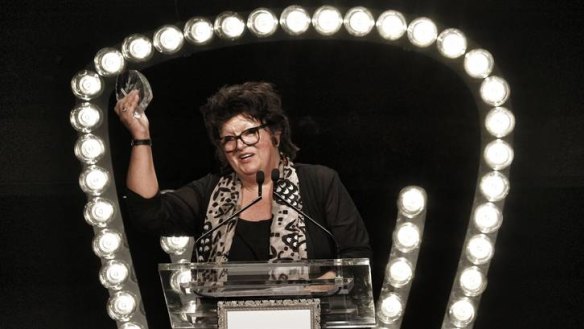
When The Age Good Food Guide announced its annual restaurant awards in August, not every chef was crossing their fingers for an extra hat or two - some were almost dreading the prospect, since a higher ranking could mean more demanding customers. And what of those restaurants that go backwards and lose their hats - is that an even bigger disaster? Lucinda Schmidt, herself a reviewer for the Guide, chronicles the fallout from the Melbourne food industry's big night.
A dash of relief. And a pinch of satisfaction. For Annie Smithers, chef and owner of her eponymous bistro in Kyneton, retaining her one chef's hat award for the 2013 Age Good Food Guide was the perfect result. Losing the hat would batter her self-esteem; gaining a hat would bankrupt her.
"Two hats for me would be the end of the world," says Smithers, in an interview before the awards were announced on August 27. "It comes down to economics; I do not have the money to create what I think is a two-hat restaurant." Being stripped of the hat that her restaurant has held for seven years would, she hypothesises, be more palatable. "My ego would be shredded. But I'd get over it, and probably be quite happy at 14 or 14.5 (out of 20). That gives a freedom from the expectation that diners have. You can mould your business in a way your gut tells you to."
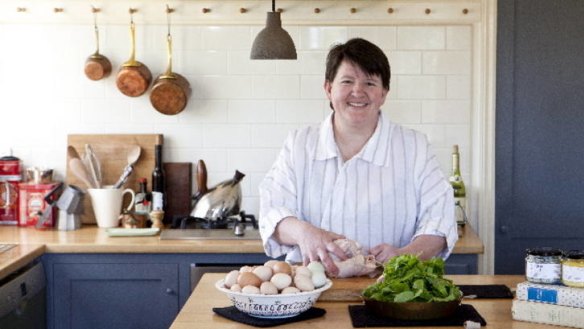
An example? After her bistro scored 15 out of 20 and its first hat, in the 2007 guide, Smithers received a letter of complaint from a diner who was horrified that a hatted restaurant used unbleached toilet paper in the restrooms.
Despite her environmental concerns, Smithers switched to softer white loo paper and has also upgraded crockery, tables and chairs and launched a website much sooner than her original business plan - albeit for a jam kitchen - envisaged.
As Smithers makes clear, the chef's hat awards can be a double-edged sword. Restaurant consultant Tony Eldred, principal of Eldred Hospitality, puts it like this: "One hat is a good place to be, two hats starts to get difficult and three hats is a nightmare - you can only go backwards and people are expecting the meaning of life for 200 bucks." On that assessment, Attica chef Ben Shewry, whose Ripponlea restaurant moved from two to three hats in the 2012 guide (and retained three hats for 2013), should be feeling the weight of the world on his shoulders. Not so. "To me it's not a burden to have three hats at all," he says. "My motivation is from within, I'm my harshest critic. I love cooking and I want to get better at cooking and at running a restaurant. We always do things to improve, but not because of hats."
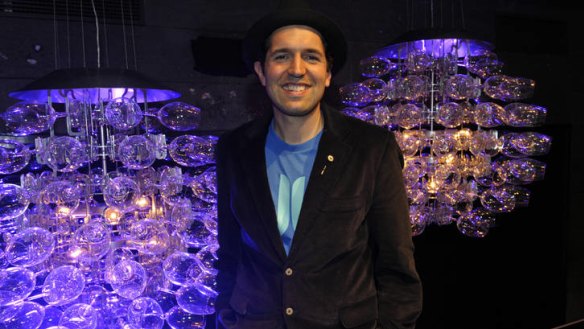
For him, the jump from one to two hats (in the 2008 guide) was a bigger thrill, especially after his fury at the previous year's one-hat review. "It said 'sometimes the fish can be overcooked'. I was so angry at myself for letting it happen; I took it out on my sous chef who's my best friend. I yelled at him and I watched every piece of fish being cooked afterwards. Overcooking fish is completely unacceptable. I learnt from the fish."
Indeed. After the awards presentation for the 2008 guide, the then guide editor John Lethlean issued Shewry with a challenge on his two hats. "I remember exactly what he said to me: 'Now, let's see if you can keep them, Ben.' That was a fair comment - a lot of people can be good for one year then go off the boil. But when you're young, 27, and fighting for the livelihood of your restaurant and your family, you know what two hats could mean."
As Shewry points out, hats can be important to draw customers to a suburb they may not otherwise eat in (and even more so for regional restaurants) or to mark them as "special occasion" places. Plus they can help attract and retain good staff, and give a morale and ego boost to everyone from the head chef down to the dishwasher, all of whom appreciate a hatted restaurant on their resume. From a hard-nosed business perspective, however, more hats does not necessarily mean more profit. And losing a hat does not necessarily mean financial disaster.
Eldred, whose clients include some of Melbourne's top restaurants, has seen the results of two hats down to one, and one hat down to none. "You might get a week or fortnight with a dip, but it's not anywhere near the effect of a toxic newspaper review that spells it out," he says. (Restaurants that do not meet a minimum standard of 12 out of 20 are omitted from The Age Good Food Guide altogether). He's also seen clients move up to two hats, requiring even more attention to detail, innovative dishes and skilled staff, which pushes up food and wage costs. "You start to lose your profitability at the same time as everyone is judging you more harshly."
In his view, hats are more a question of pride and status among peers than a licence to print money. "Chefs are thrilled when they get them and take it pretty hard when they lose them - it can be quite demoralising and they feel for their staff. But really experienced owners shrug and say it's an irritation rather than a disaster."
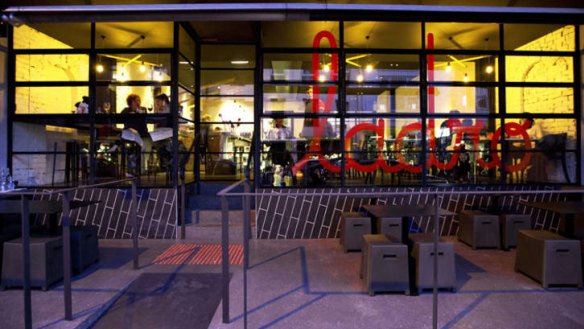
In the 2012 Age Good Food Guide, upmarket Fitzroy pizzeria Ladro lost the chef's hat it had held for seven years. To rub salt into the wound, it also lost its separate review in the guide, making way for its new sibling, Ladro Greville in Prahran, which scored half a point below a hat. It is with some trepidation, therefore, that the Melbourne Magazine rings co-owner and operations manager Sean Kierce, expecting a tirade of outrage at the unfairness of falling from one hat and the best new restaurant award in the 2005 guide, to a mere sentence in the 2012 guide (in the 2013 guide, neither Ladro has a hat, but both have their own reviews and Ladro Greville has the award for best BYO restaurant).
"Sure, there was disappointment, but it didn't send us into a tail spin," Kierce says of the 2012 downgrade. "I contacted the editor (Janne Apelgren) and she was very good about it and sent us a two-page email which was incredibly constructive." The email gave him the dates of the two visits by different reviewers and details such as how one reviewer asked for the pizza to be cut and the waiter refused. "The feeling was that maybe the love had been lost," says Kierce, who had opened the Prahran off-shoot six months earlier. "Greville Street was sucking the life out of us, we just weren't spending the time at Gertrude Street (Fitzroy) that we had been."
The email prompted a restructure of Ladro's internal systems and processes to make sure kitchen and front-of-house staff were being properly managed. Kierce was horrified to discover that the chef had tweaked the pizza dough recipe to save on costs and the waiters didn't cut pizzas because of hygiene concerns in touching a customer's food. He was also stung by the feeling that perhaps within the industry and the foodie community, the hat loss meant that the original Ladro was not as hot as it once was.

Hot or not, what the downgrade did not affect was profitability. "For the first seven years, we didn't make much money; we weren't looking at wage and food costs as much. Ladro is now running much better than it was," says Kierce, adding that the week before our interview, Ladro Gertrude Street had its busiest weekend ever, turning away 50 people on Friday and Saturday nights.
The Ladro experience highlights an important point made by Age Good Food Guide editor Janne Apelgren and by former editor Rita Erlich (who still reviews for the guide and is the author of Melbourne By Menu, released this month). Consistency - and the management systems in place to ensure a consistent standard for diners - is the bedrock on which hats are awarded and kept. As Erlich explains: "Running a restaurant is like a musical performance because every night is different. But it's not like a bullfight, with people wondering 'what is going to happen today?'"
While it may seem tough that a restaurant loses a hat on the basis of perhaps two off nights, Apelgren points out that the guide is written for the dining public who expect a high-quality experience from a hatted restaurant, whether or not the head chef is sick or the fish delivery didn't arrive or a new waiter is learning the ropes. Attica's Ben Shewry sees it this way: "It's a very personal thing for me. Imagine a couple with a young child who have saved up for six months and have paid for a babysitter. If they don't have an amazing night, that makes me incensed with rage."
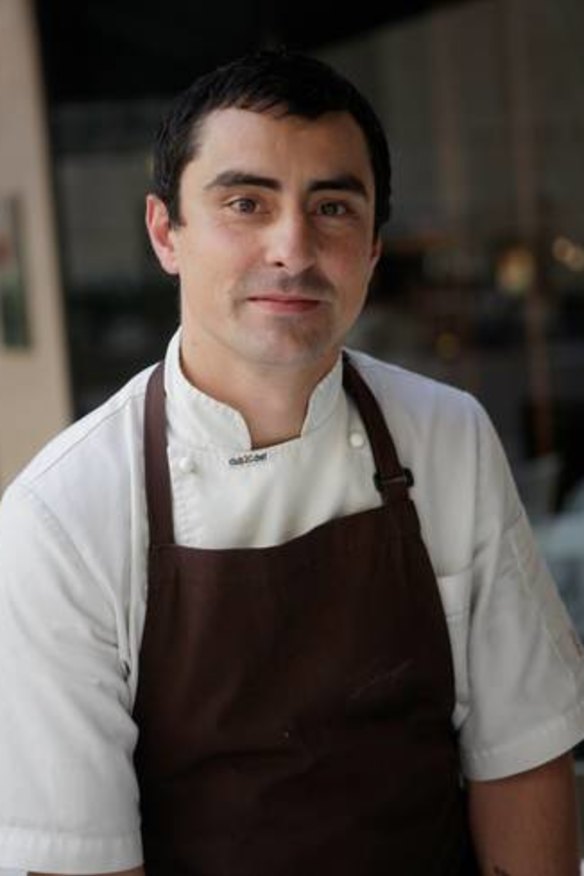
Which is not to say everything must be perfect all the time. "The mark of a good restaurant is how well it can handle something going wrong," says Erlich. For the 2013 guide, Apelgren was doing the only review visit to a regional restaurant when it became clear that her table and several others were facing a long wait for their main courses. Out came the owner to explain that the dishwasher hadn't turned up so he was doing the dishes himself, and to offer diners a complimentary glass of wine to apologise for the delay. The restaurant, which Apelgren had visited several times previously, has retained its spot in the 2013 guide.
As to the importance of hats among the deluge of restaurant reviews and feedback on blogs, websites, Twitter and Facebook, those interviewed saw a huge difference between reviews and awards that are well-researched and fact-checked (see panel on page 52) and website posts such as this one from Google Maps about Annie Smithers' Bistrot: "Will never go back, rather go to Maca's". Or this: "I would not visit if it was my last meal on earth."
Smithers says she has stopped reading bloggers' comments on her restaurant. "I can't endure it. I take it all to heart and I find it very difficult ... It's really important, especially in this day of digital media, that there are some guides that are properly researched and written by contributors who are articulate and can write and who understand the whole world of restaurants."
Industry veteran Alla Wolf-Tasker, chef and owner of the two-hatted Lake House in Daylesford, believes diners are less "hat-conscious" than they used to be. (Pei Modern may disagree. Just after scoring a hat and the award for Best New Restaurant on August 27, it was flooded with 120 website bookings between midnight and 9am.) But it's the restaurant industry, in Wolf-Tasker's view, that is most aware of the hatted pecking order.
"There is no doubt there is still considerable pride and status involved with the granting of hats - certainly for kitchen and front of house teams who still aspire to be part of the best. Better scores, accolades and awards are strong motivational tools."
Just ask the senior staff at Mornington Peninsula restaurant Ten Minutes By Tractor, which jumped from one to two hats in the 2013 guide. They are off to a dinner at Britain's famed Fat Duck, thanks to a promise by owner Martin Spedding made four years ago, before Ten Minutes had any hats. "I'm sure I could have come up with something a little less grand, but it wouldn't have been the same," says Spedding. "It was a crazy bet, but no less crazy than starting the restaurant in the first place or thinking we could ever have two hats."
Certainly, there's a ripple of anxiety across Victoria's top restaurants each August, as invitations arrive - or not - for The Age Good Food Guide award presentations, held on the last Monday night of August. Invitations are sent only to hatted restaurants and to those who have won other awards - and the rise of social media allows recipients to publicise their inclusion. Here's a tweet from Ian Curley, chef of European, on August 5: "Just received the Age Good Food Guide invite, wonder if it's worth going again this year." (Yes - European scored a hat). And a tweet from Gills Diner in mid-August: "We have our invite to The Age Good Food Guide awards. Fingers crossed." (It retained its hat in the 2013 guide).
When The Melbourne Magazine interviews Sean Kierce, Ladro Greville has received invitations but Ladro in Gertrude Street hasn't. Annie Smithers is hoping hers will arrive in Kyneton the next day, after reading Ian Curley's tweet that he already has his. Ben Shewry - who presumably had no doubt Attica would be invited - confirms he's received his invitations, but he will be in Poland for a Cook It Raw gathering and will rely on Twitter and his sous chef to give him the news.
"Amongst people that cook and have restaurants in Melbourne, (the guide) is important," he says. "They do their work in a serious and professional manner and there's no conflict, people are paying for their meal. I feel like there's a trust, it has sincerity - and I don't say that lightly."
Restaurant reviews, news and the hottest openings served to your inbox.
Sign up